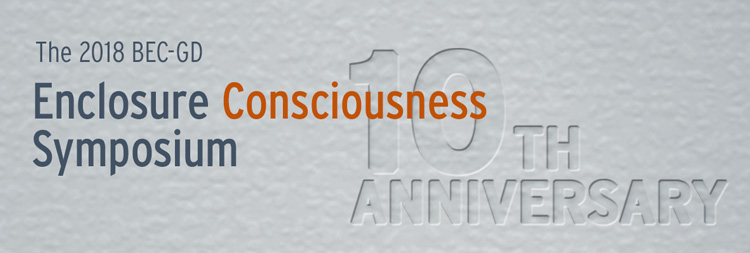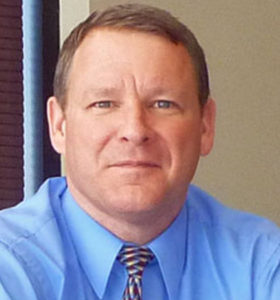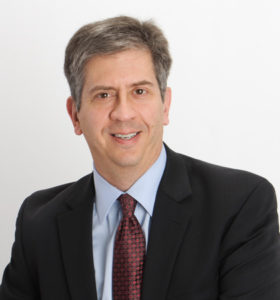
Date: October 16, 2018 | Time: 8:00am - 5:00pm - 5-6.5 AIA HSW Credits
BEC-GD 10th Annual Symposium: Presentations & Speakers
The Building Enclosure Council of Greater Detroit is proud celebrate their 10th Annual Symposium with you. Every year, the BEC-GD symposium presents a distinguished panel of speakers to discuss the current and upcoming trends in building enclosure performance and evaluation. Registration includes lunch, but the Early Bird ticket deadline is October 1st!
REGISTER HERE
Up to 6.5 AIA HSW Continuing Education Credits will be provided
AGENDA:
8:00am Check-in, Continental Breakfast, and Sponsor Displays
8:30am Opening Comments | Doug Barron, 2018 BEC-GD Chair
9:00am Stanley Yee, LEED AP
10:15am Morning Break
10:45am M. Steven Doggett, Ph.D. LEED AP
12:00pm Lunch Break
1:30pm Lurita McIntosh Blank, AIA, RBEC
2:45pm Afternoon Break
3:15pm David H. Nicastro, P.E.
4:45pm Closing Remarks
PRESENTATIONS:
Whole Building Air Leakage Testing: A Tale of Two Completed Projects
Stanley Yee, LEED AP | Building Design Specialist at Dow Corning Corporation
ABSTRACT
This presentation will explore the paths that two recently completed projects took to achieve its air-tightness performance goals through a method paralleling that of the Building Enclosure Commission (BECx) process. Focus will be on the on aspects of building enclosure detailing, installation, and material selection and their specific performance capabilities that enabled the building enclosure system to ultimately demonstrate how they positively impact the whole building air-tightness performance and verified through whole building air tightness testing.
LEARNING OBJECTIVES
• Differentiate the performance characteristics between organic and inorganic materials
• Identify key challenges in achieving air (and water) tightness in building enclosures
• Understand a process used to verify the air tightness of building enclosures
• Through case studies, learn of the actual process used for the design, specification, installation, and air tightness verification of building enclosures
The Rainscreen Paradox: A Critical Analysis of Conventional Rainscreen Design
M. Steven Doggett, Ph.D. LEED AP | Principal Scientist at Built Environments
ABSTRACT
Classical rainscreens have the singular purpose of improving moisture transport by means of convective forces. These same forces may actually have detrimental consequences, especially in assemblies that rely partially or exclusively on exterior insulation. This presentation examines the ‘Rainscreen Paradox’ – the apparent conflict between moisture transport and the coexisting effects of wind washing. I will demonstrate potential pitfalls in current practices with advanced simulations of rainscreen airflows and convective heat loss. I will also challenge prevailing assumptions regarding moisture performance in modern framed wall construction. Strategies for risk avoidance will be discussed in context with material selection, design, and construction quality control.
LEARNING OBJECTIVES
• Attendees will be introduced to emerging risks associated with the use of continuous insulation in ventilated rainscreens. Discussion will focus on the paradox of maximizing moisture transport while minimizing the adverse effects of convective heat loss. This presentation will address common insulation materials, varied rainscreen geometries, and expected imperfections in wall construction.
• Attendees will be presented with a fresh perspective on how heat, air, and moisture move through modern framed wall systems. Graphic simulation results will help visualize vapor pressure gradients while also demonstrating previously unseen flow characteristics as air encounters inlets, cladding attachment systems, and insulation gaps.
• Attendees will gain greater awareness of the magnitude and effects of wind-washing, convective cooling, and convective moisture transport. These convective processes will be explored as a function of wind speed, insulation permeability, and rainscreen geometries. Attendees will also be introduced to novel approaches for assessing moisture risks utilizing complex three-dimensional assemblies.
• Attendees will learn how to avoid these risks to meet the difficult demands of today’s building enclosures. Furthermore, attendees will be challenged to achieve simpler, thoughtful designs for improved performance under expected and extreme conditions.
Balancing Preservation and Public Safety for Midcentury Enclosures: A Zero-Sum Game?
Lurita McIntosh Blank, AIA, RBEC | Senior Project Architect at Raths, Raths & Johnson, Inc.
ABSTRACT
Obsolete building technology is a heavy burden for aging buildings. Midcentury buildings, those built immediately after World War II through the mid-1970s, added extraordinary complexity to enclosure systems with the introduction of new wartime materials and untested technologies. The continual tweaking assemblies to push buildings taller, lighter, faster, and cheaper meant that facade technology, a relatively staid practice through the late nineteenth century, was evolving faster than our ability to predict performance issues. In many ways, this has not much changed today.
While the life-cycle of traditional masonry facades is well understood, midcentury enclosures are increasingly under scrutiny as sources of serious performance issues and potential overhead hazards. The complexity and lack of redundancy in these systems presents serious challenges to repairs and retrofits, regardless if the end goal of those interventions is energy or public safety driven. This scrutiny is paired with growing advocacy for modern heritage to prevent the wholesale loss of individual structures and broader building trends of architectural significance. But what about preservation of the failing enclosure technologies that made these buildings possible?
This presentation will review the conflicts between the preservation of obsolete but technologically important enclosure systems and the challenges they face for meeting modern life-safety requirements. The impact of detailing, material behavior, appearance, energy efficiency, hazardous materials, and maintenance will be covered, in addition to the impact of both changing building codes and our evolving understanding of how midcentury façades behave as they age.
LEARNING OBJECTIVES
• Understand the technological development of facade systems in the mid-twentieth century
• Recognize failure modes and distress conditions related to material performance and installation issues for mid-century facades
• Identify when failures and distress conditions elevate to life-safety issues
• Compare retrofit and restoration approaches for historical appropriateness against performance improvements
Durability of Water-Resistive Barriers as a Factor in Litigation
David H. Nicastro, P.E. | Chief Executive Officer at Building Diagnostics, Inc.
ABSTRACT
Problems with manufacturing, design, and construction cause countless premature failures of water-resistive barriers; therefore, durability is a central factor in construction litigation. This presentation will synthesize a practical understanding of durability based on theoretical behavior, observations from failure case studies, and research and test results from The Durability Lab, a research establishment at The University of Texas at Austin. The durability concepts that support an allegation of “premature failure” will be explained. Improving durability is also closely related to sustainability; preventing
premature failure keeps building materials out of the landfill longer.
The Durability Lab has tested dozens of air barriers and accessory products, including hundreds of combinations of adhesion testing of one product to another, fastener sealability, crack-bridging ability, coverage rate on sheathing, UV resistance, and water resistance. New findings will be presented on these subjects, including remarkable findings regarding durability behind cladding. Some products re-emulsified and washed away behind cladding, and others fused to the cladding so that it could not be removed.
LEARNING OBJECTIVES
• Understand the factors that affect initial performance of air barriers, including coverage rate on different sheathings and fastener sealability.
• Understand the factors that affect durability of air barriers before cladding, including UV resistance and crack bridging.
• Understand the factors that continue to affect durability of air barriers after cladding, including heat resistance, water resistance, and long-term adhesion of tapes and accessories.
• Understand different ways of testing tapes and self-adhered flashing products, and why the industry-adopted pull-off method is the least predictive of durability.
SPEAKER BIOS:
 Stanley Yee, LEED AP
Stanley Yee, LEED AP
A LEED® Accredited Professional, Stanley graduated from Concordia University in Montreal, Canada with a Bachelor of Engineering degree in Building Engineering. He has worked in the building enclosure industry for over 20 years; of which he spent 8-years in Hong Kong working for internationally based curtain wall contracting and facade consulting firms. While in Hong Kong, Stanley accumulated experience, and gained exposure and knowledge from both the contracting and consulting sides of the business. Stanley returned to the US to work as a facade consultant and project lead whose clientele included developers, architects, contractors, and specialty sub-contractors working on a variety of projects types, including; private, public and institutional with geographical diversity both nationally and internationally. Stanley’s specialties are design development and detail support, building enclosure air/water/thermal control and performance, waterproofing, and testing of enclosure performance. In 2012 Stanley joined Dow Corning Corporation as a Facade Design and Construction Specialist for their High Performance Buildings Solutions group and continues in that capacity at Dow Silicones Corporation.
At Dow Silicones, Stanley is part of the Facade Engineering and Architectural Design Team, he works with industry stakeholders to collaboratively develop innovative applications and products that enable building enclosure design and performance.
He is an active member of a number of industry organizations, including: the Building Enclosure Technology and Environment Council (BETEC) – a council of the National Institute of Building Sciences (NIBS) – though the Building Science and Technology (BEST) Conferences, the Glass Association of North America (GANA), and the National Glass Association (NGA) on which he currently serves on the Board of Directors.
For the Building Science and Technology (BEST) Conferences, Stanley served as chair/co-chair of the fenestration track at each of the BEST conferences since 2008.
 M. Steven Doggett, Ph.D., LEED AP
M. Steven Doggett, Ph.D., LEED AP
Dr. Doggett is the Principal Scientist and founder of Built Environments, Inc. an architectural & building science consulting firm specializing in building enclosure design and research. His background includes extensive field experience with complex building enclosure failures, particularly those involving air, heat, and moisture transport. He merges this experience with innovative design practices to assist multi-stakeholders achieve more resilient, higher-performing buildings. Dr. Doggett is actively engaged in enclosure design, assembly and material research, and building simulations involving computational fluid dynamics, 3-D thermal modeling, and hygrothermal modeling. Dr. Doggett is the former chair of the Minnesota Building Enclosure Council.
 Lurita Blank, AIA, RBEC
Lurita Blank, AIA, RBEC
Lurita McIntosh Blank has been a practicing building enclosure consultant for over a decade, specializing in masonry conservation, façade restoration, roofing and waterproofing, and new enclosure commissioning. She has provided restoration services for dozens of National Register and National Historic Landmark properties across the nation, balancing materials and performance needs for complex enclosure issues, while her new construction consulting provides a specialized insight into the integration of roofing and waterproofing systems with the vertical enclosure.
Lurita is a Registered Architect and a Registered Building Envelope Consultant through RCI, Inc. She is deeply involved with the Association for Preservation Technology, currently serving as a Director and committee co-chair.
 David H. Nicastro, P.E., F.ASTM
David H. Nicastro, P.E., F.ASTM
David H. Nicastro is a licensed professional engineer specializing in durability and failure causation theory. He analyzes existing buildings and designs remedies. He is the founder of Building Diagnostics and Engineering Diagnostics, which grew to be an Inc. 500 firm by 2000. He also founded The Durability Lab, a testing center housed at The University of Texas at Austin to study the durability of building components, identifying factors causing premature failure. Mr. Nicastro is the past chairman of ASTM Committee C24 on Building Seals and Sealants, and has published over 50 articles and books on durability and failure of building materials.
